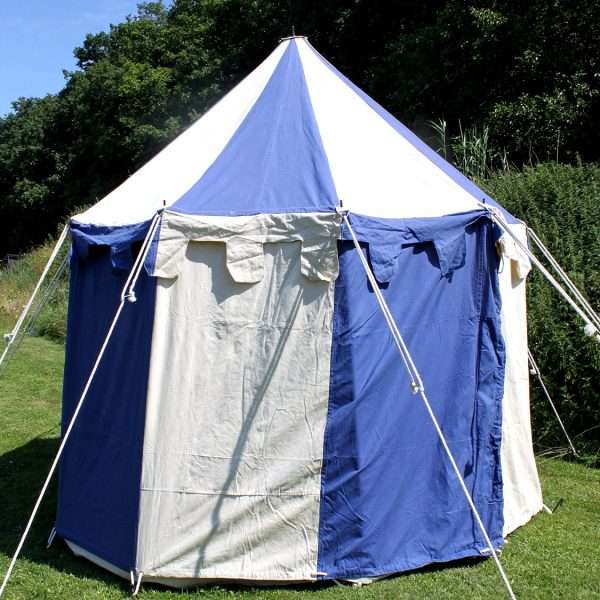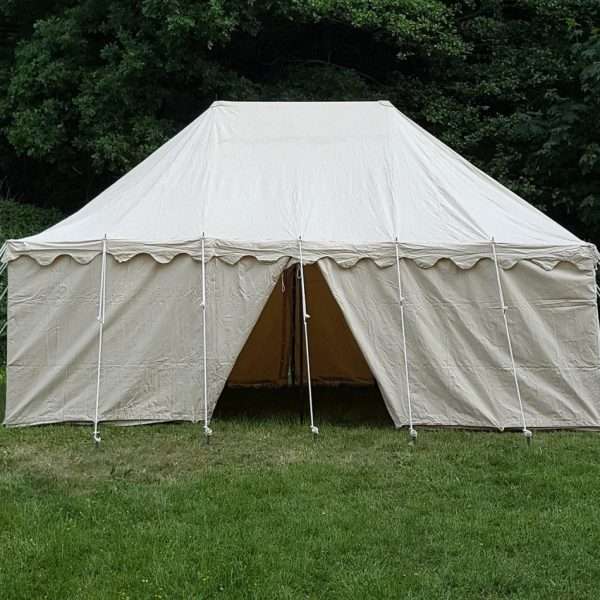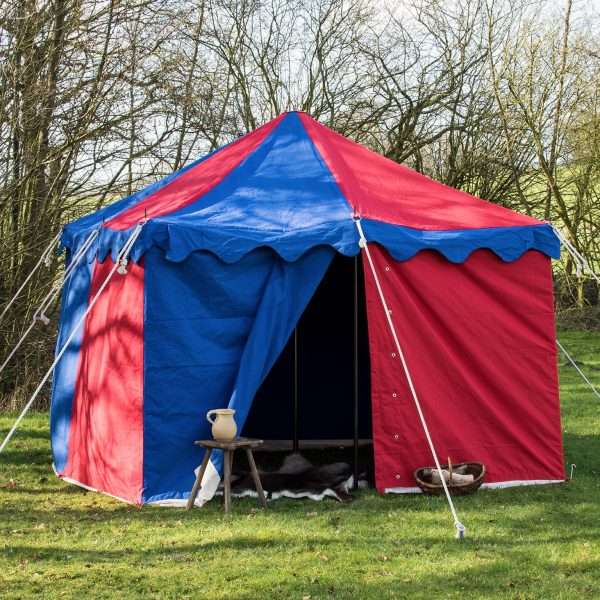Medieval tents were an essential part of life during the medieval period, and they continue to capture the imagination of history enthusiasts today. These tents were made from durable materials like canvas, wool, and linen, and were used for a variety of purposes, from sheltering soldiers on the battlefield to housing noble families during their travels.
One of the most popular types of medieval tent was the pavilion, which was a large, rectangular or square tent that served as a portable castle for nobles and royalty. Pavilions were often decorated with colorful banners, flags, and heraldic devices that represented the family or kingdom of the owner, and they were a symbol of power and prestige.
Other popular types of medieval tents included the wedge tent, which was a smaller, more basic tent that was used by soldiers and merchants, and the bell tent, which was a circular tent that was commonly used by traveling performers and entertainers. These tents were often adorned with elaborate designs and patterns, and they were a reflection of the owner’s status and wealth.
The design of medieval tents varied greatly depending on their purpose and the resources of the owner. However, most tents featured a central pole that supported the roof, as well as ropes and pegs that were used to secure the tent to the ground. These tents were often portable and easy to set up, making them ideal for travelers and nomads.
Today, medieval tents continue to be popular among reenactors and history enthusiasts who seek to recreate the atmosphere of the medieval period. These tents are often made from traditional materials and designs, and they are used to house performers, vendors, and other participants at festivals and events. They provide a glimpse into the past and allow us to experience a small part of the rich history of the medieval period.

















